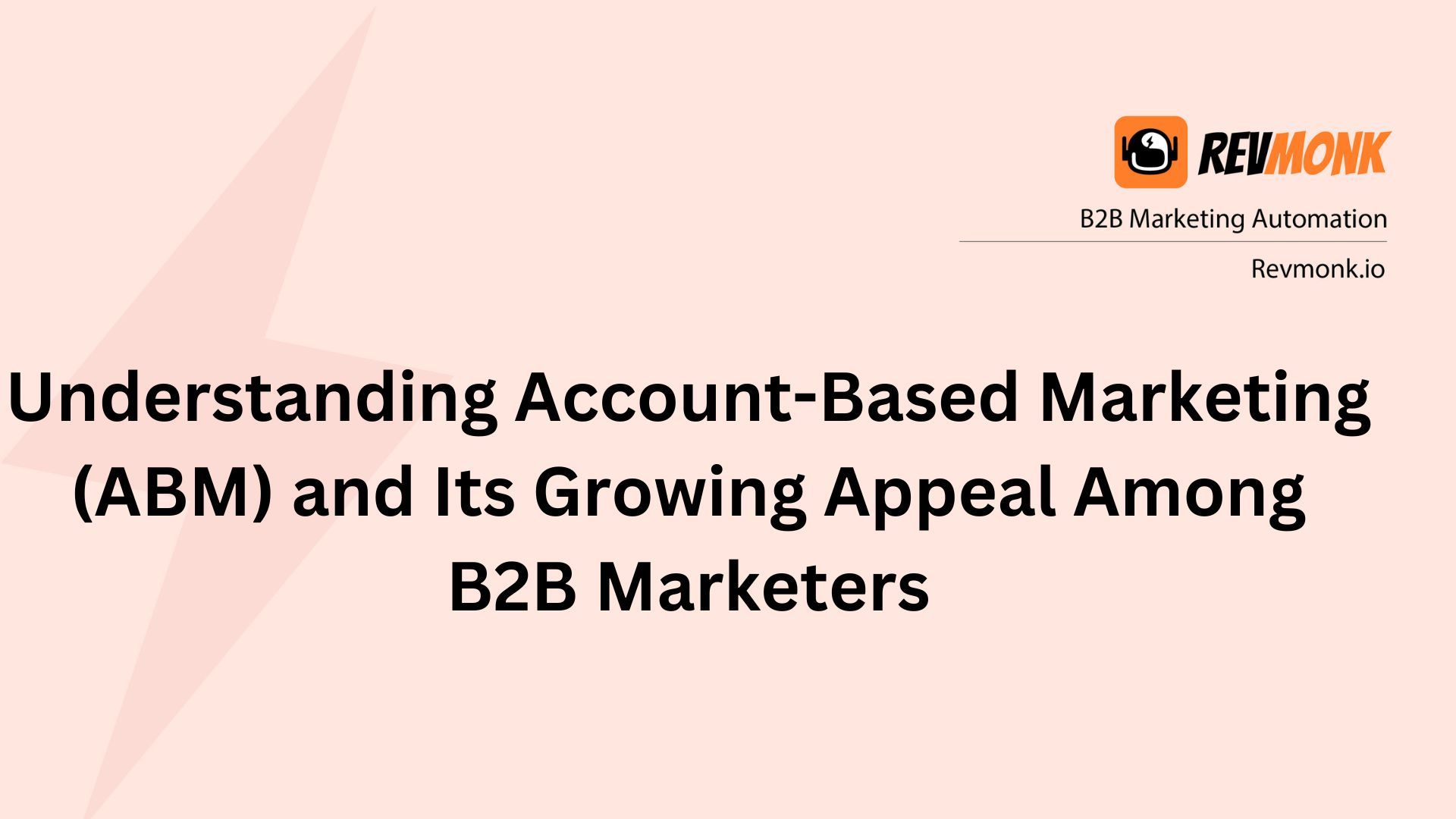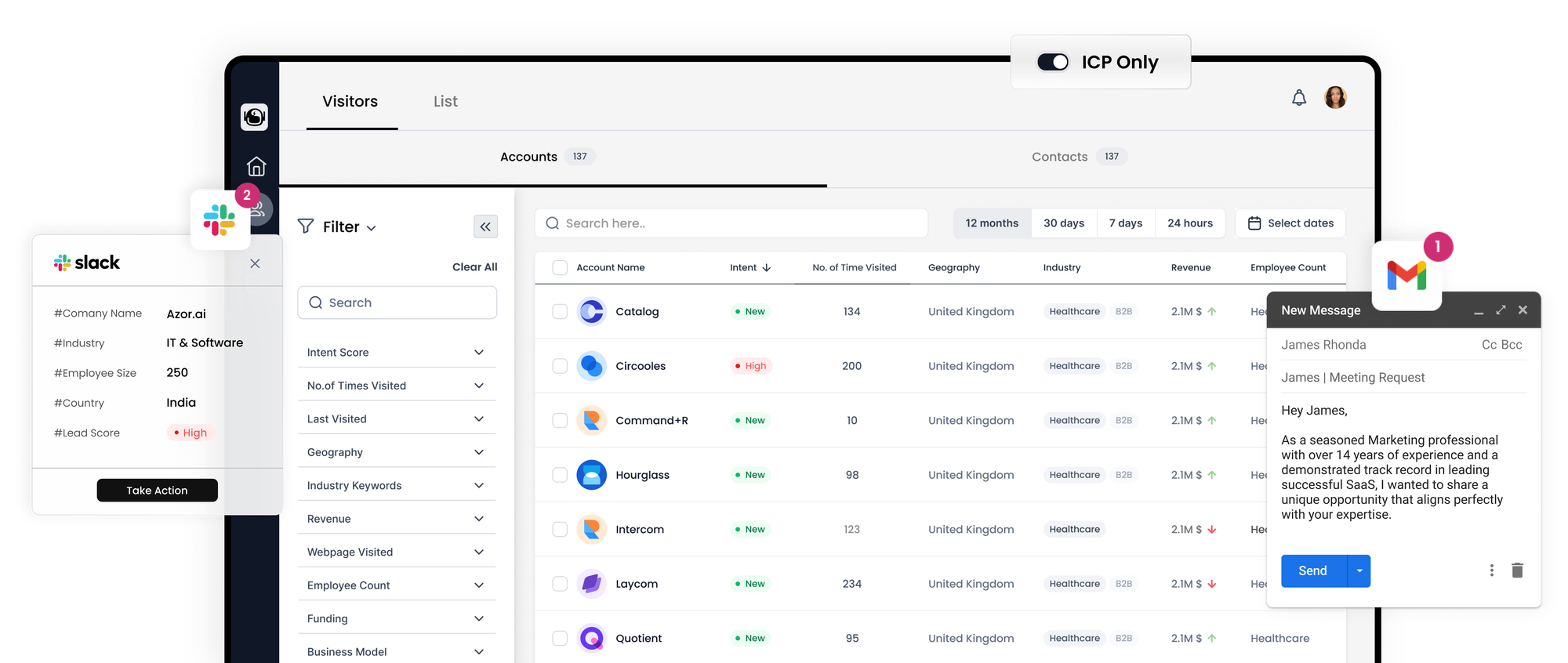Understanding Account-Based Marketing (ABM) and Its Growing Appeal Among B2B Marketers

Account-Based Marketing (ABM) has garnered increasing attention in the realm of B2B marketing, driven by advancements in targeting technologies and the greater accessibility of relevant data. ABM is a strategic approach that harmonizes the efforts of sales and marketing teams to deliver precisely targeted advertising, as well as personalized content and messaging, to high-value accounts and the individuals associated with those accounts.
The rationale behind ABM is rooted in the recognition that B2B purchase decisions often involve a group of individuals within a company rather than a single decision-maker. ABM tools play a pivotal role in automating various data and workflow processes required to effectively target these groups.
ABM is not a novel concept; B2B marketers have employed it for over a decade. However, the recent leaps in the sophistication and accessibility of relevant data, coupled with the technological advancements enabling ABM, have spurred widespread interest and adoption of this strategy.

Types of Account-Based Targeting
A successful ABM strategy hinges on aligning sales and marketing efforts to focus on high-value accounts with the greatest potential for business opportunities. Unlike traditional marketing approaches, ABM starts with a small group of identified accounts, gradually widening its scope as accounts progress through the sales funnel.
Several factors influence the selection of targeted accounts, including historical interactions, growth prospects, and alignment with the Ideal Customer Profile (ICP). The ICP is typically crafted using predictive analytics and scoring, taking into account factors such as industry, company size, budget, and geography.
Once sales and marketing teams agree on the list of target accounts, three primary ABM targeting approaches come into play, often used in combination:
1. 1-to-1 Targeting (Strategic ABM)
This approach involves collaborating with account teams to create highly customized programs for each target account, often including face-to-face or virtual meetings.
2. 1-to-few Targeting (ABM Lite)
Marketers execute less personalized programs for clusters of target accounts with similar needs or attributes. This may encompass email marketing campaigns and in-person or virtual events tailored to groups of accounts.
3. 1-to-many Targeting (Programmatic ABM)
Marketers employ AI-driven automation to send precisely targeted and personalized messages to individuals within hundreds or even thousands of key accounts. This approach encompasses email campaigns, web content personalization, digital advertising, retargeting, and large-scale live or virtual events.
The Role of ABM Tools
A diverse array of ABM tools is available to automate and execute ABM strategies effectively. These tools encompass B2B data enrichment, AI-powered predictive analytics, interaction management (e.g., digital advertising, direct mail, websites, events, and sales outreach), and ABM infrastructure and orchestration.
To comprehend the capabilities of ABM tools, it's crucial to understand the types of data these platforms work with:
- Firmographic Data
Provides quantitative business information, including market vertical, company size, number of locations, employee count, annual revenue, and growth.
- Intent Data
Identifies actions or signals from companies that indicate their interest in a product or service.
- Technographic Data
Identifies the hardware and software systems that accounts use (particularly relevant for technology vendors).
Now, let's delve into the key capabilities and considerations when selecting an ABM tool.
Key Considerations for ABM Tools
1. Data Enrichment
Effective ABM begins with robust, accurate account data. ABM tools bridge gaps in first-party data by offering specific business data and broader business insights that enhance content customization and target account engagement.
2. Account-Based Marketing Targeting
ABM programs can employ various targeting levels (1-to-1, 1-to-few, 1-to-many), depending on the size and scope of the initiative. ABM tools often provide machine learning capabilities for precise targeting.
3. Personalization and Predictive Recommendations
B2B buyers expect personalized messaging, and some ABM tools utilize AI to enable highly customized campaigns. Integration with third-party personalization tools or CRM platforms is also common.
4. Interaction Management/Orchestration
Effective B2B marketing involves engagement across multiple channels, both offline and online. ABM tools facilitate interactions through various mediums, including email, websites, virtual events, video calls, webinars, and digital advertising.
5. Account-Based Marketing Reporting
Measuring and reporting on program success is essential for gaining C-suite support and securing buy-in from sales teams. ABM tools are evolving to offer more sophisticated analytics, often leveraging AI for deeper insights.
6. Third-Party Software Integration
ABM tool vendors are expanding integration options, offering native integrations and APIs to streamline access to existing third-party systems such as CRMs, marketing automation platforms, event platforms, and content management systems.
In conclusion, Account-Based Marketing is gaining prominence in the B2B marketing landscape due to its efficacy in targeting high-value accounts. Leveraging ABM tools, businesses can enhance their marketing strategies, engaging prospects and customers with tailored content and messages. With the right ABM tool selection and execution, organizations can drive better results and capitalize on the potential of this strategic approach.
Exploring the Advantages of Utilizing Automated ABM Tools
Automating various aspects of Account-Based Marketing (ABM), such as data management, analytics, campaign execution, and workflow processes, yields a multitude of benefits. These advantages encompass:
1. Enhanced Sales and Marketing Alignment
Automation fosters tighter coordination between sales and marketing teams, ensuring both work harmoniously towards common objectives.
2. Reduced Sales Cycles
Automation expedites processes, leading to shorter sales cycles as teams can efficiently target and engage high-value accounts.
3. Increased Marketing ROI
Automation optimizes resource utilization, enabling marketers to allocate resources more effectively and generate a higher return on investment.
4. Augmented Account Value and Revenue
By focusing on high-value accounts, ABM tools help businesses maximize revenue potential and customer value.
5. Accelerated Pipeline Velocity and Closed Rates
Automation streamlines workflows, accelerating the movement of prospects through the sales pipeline and increasing conversion rates.
6. Enhanced Customer Experiences
Personalized, targeted campaigns made possible by automation result in improved customer experiences, fostering stronger relationships and brand loyalty.
Determining the Need for an ABM Platform
Deciding whether your organization requires an ABM platform involves considering several critical factors. These factors encompass your company's business objectives, team capabilities, support from management, and financial resources. Addressing the following questions can aid in making an informed decision:
1. Have We Defined Our ABM Goals?
Clearly outlining your account-based marketing objectives is essential to gauge the necessity of an ABM platform.
2. Can Sales and Marketing Agree on Target Accounts?
Effective ABM relies on consensus between sales and marketing regarding the selection of target accounts.
3. Do We Have Management Buy-In?
Ensuring support from upper management is crucial for the successful adoption of ABM.
4. Have We Considered All Costs?
A comprehensive evaluation should include all associated costs, not just the platform itself.
5. Are We Prepared to Measure and Report Results?
Implementing ABM necessitates robust measurement and reporting capabilities to track progress and make data-driven decisions.
The Growing Significance of Account-Based Marketing
Account-Based Marketing (ABM) continues to gain prominence in the B2B marketing landscape due to its ability to nurture critical relationships and drive tangible business outcomes. While inbound marketing remains vital for B2B lead generation, ABM empowers marketers to regain control of the process, expedite the buying cycle, and enhance conversion rates for target accounts. Some noteworthy positive impacts reported by ABM users include:
The Acceleration of ABM Adoption Amid the Pandemic
The COVID-19 pandemic brought significant changes to consumer behavior, but its effects on the B2B purchasing landscape received less attention. Nevertheless, the pace of developments in the B2B realm was equally swift.
B2B buyers adapted to the lockdown environment, and marketing technology providers played a pivotal role in helping companies convert prospects into customers during this period. ABM, although in use by B2B marketers for over a decade, experienced broader adoption due to rapid advancements in data accessibility and technology capabilities. The pandemic further accelerated ABM adoption, as B2B buying cycles underwent fundamental shifts, with events and in-person meetings transitioning to virtual formats. This transformation underscored the value of ABM in the current business environment.
